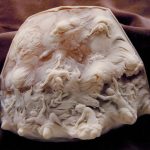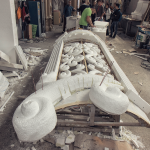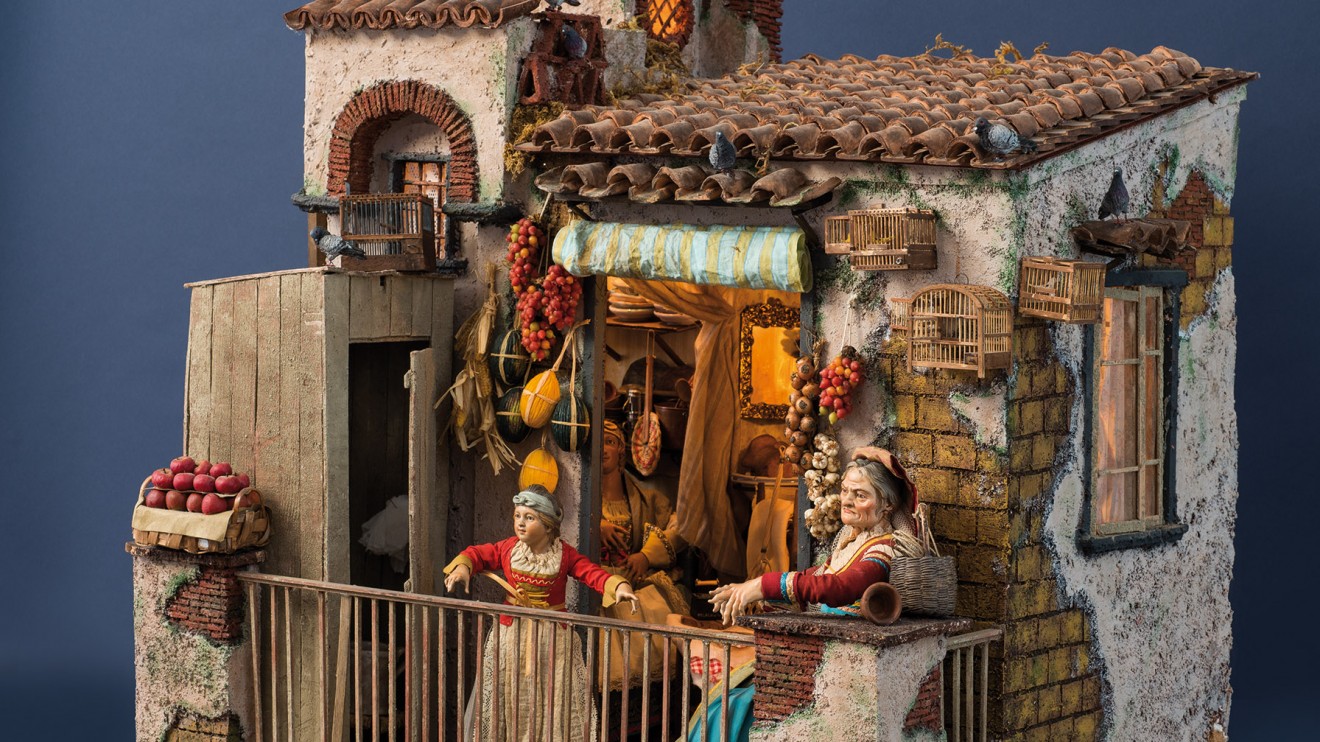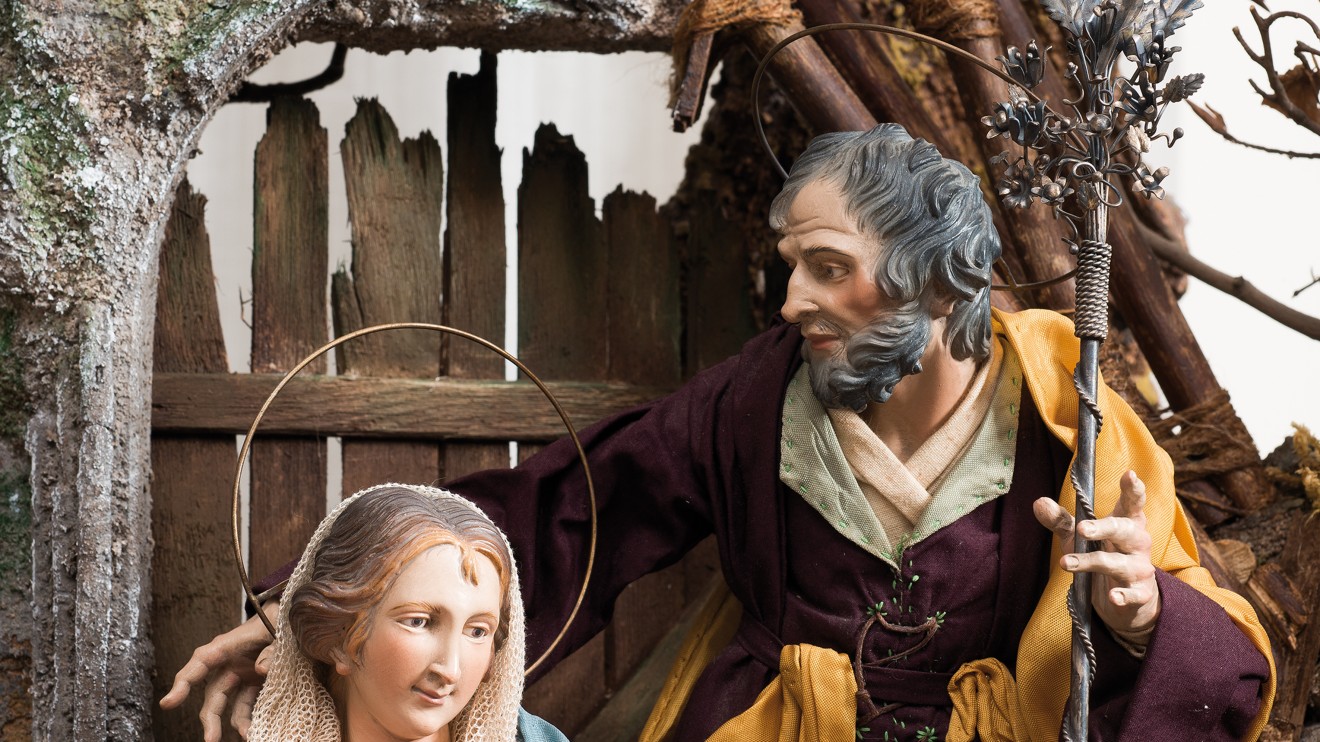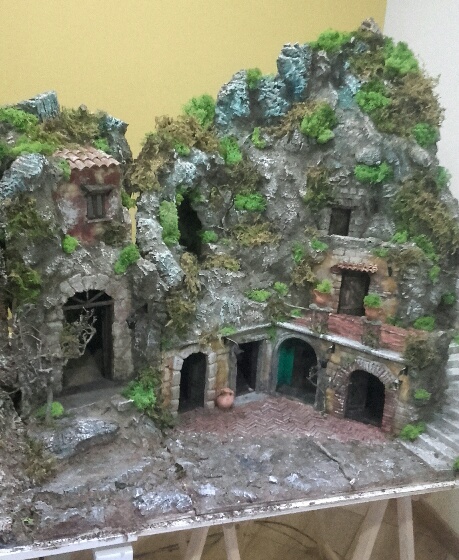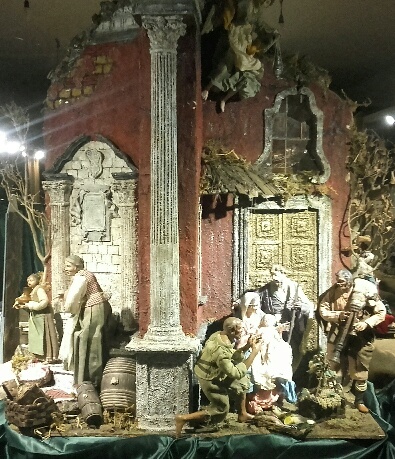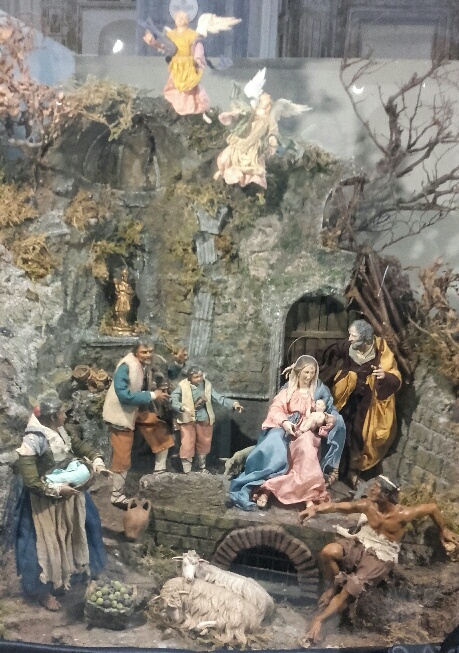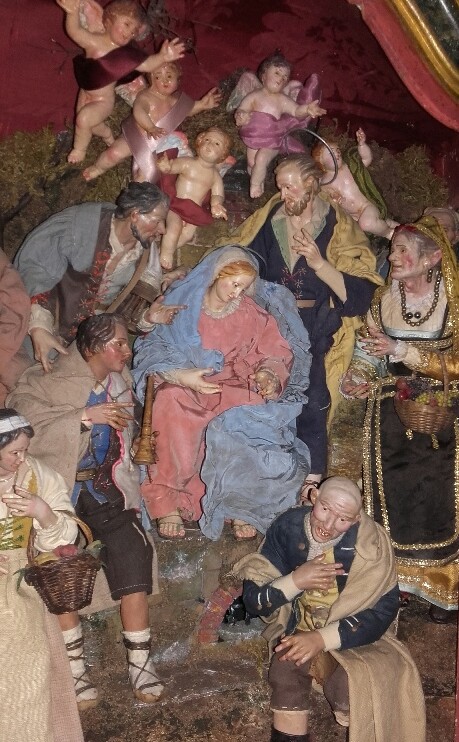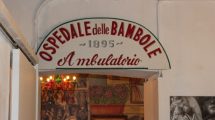If you are a Neapolitan and you were born on the 25th of December in Naples, you will be probably linked with the tradition of the crib which, as a consequence, will be written in your DNA.
As for Pasquale Catalano (Naples, 12/25/1964), this event is not probable but certain: “I have always felt passion and fondness for Christmas and especially for the Nativity, a feeling perhaps tied to my date of birth … in fact since I was a child, I have patched together small pieces of cork and various wooden sticks. ”
So Pasquale’s passion arises at a very young age when he starts building his own Nativity refining it over time as a self-taught person. However, his need to improve, to refine techniques, to acquire a broader theoretical background on which to support his work, later leads him to attend several Nativity art courses. In 2000 he decides to dive with even more commitment and continuity in the artistic crib craftsmanship.
Pasquale Catalano is a passionate and knowledgeable “guardian” of the classical tradition of crib, as regards the materials to be taken and the technics to be used for its production: “I create ” rocks” of nativity scenes in the 18th century Neapolitan style for senior pastors of about 33/35 cm; and also sets for popular Neapolitan cribs, following the 19th/20th century style, for terracotta pastors of different sizes (from 5 cm to 15 cm).”
All this is always and only accomplished, strictly using wood, cork, plaster and acrylic colors. “I don’t like to bring innovations in the sets that I make, I’d rather follow the crib classical tradition, either for materials or for set designs.” Catalan’s approach is traditional, but it is also constantly enriched with new learning and ideas. “I read up a lot, I consult books, watch pictures, take photographs of details and particulars of the 18th century architecture which fortunately abound in Naples” .
With the support of the A.I.A.P. in Naples, his works have been exhibited in prestigious places in Naples, such as the Duomo, in other Italian cities and in several foreign countries such as Germany, France, Spain and the United States.
There is another original and particular activity, which promotes the culture of the crib, and which Pasquale realizes independently. This undertaking also made him being quoted in a recent international touring guide that deals with unusual places, aspects and secrets of Naples.
“I set up a crib of 4,50 m. at home, whose exhibition is private and by appointment, from November to June; I explain each visitor all the history, the sacred and secular, the Catholic and pagan traditions of the scenes and figures (or characters) that make up the crib.”
Pasquale Catalano’s relationship with his productions is living and emotional at every stage of their creation: from the conception to the achievement of the sketch, from the choice and the study of materials to their manipulation and modeling. And even when the “rock” begins to take shape, the “creative dialogue” continues, because the ultimate goal to be attained must be “the wonder”: “Starting from the sketch of what I am going to perform is already a succession of emotions for me… and also of “compromises” that I reach, for example with respect to the materials I’m going to use: I often soldier on making a piece of cork staying up, I replace it with another piece which then magically goes to its place even without any use of glue.”
During the creation of the “rock” he sometimes suggests what to do or how to proceed. “Obviously the biggest thrill is when your work is over and you see a design arising from a simple idea completely achieved … and then, of course, there’s the public’s appreciation: the ecstasy of adults and children who are enchanted in front of a window, admiring, looking at and for the many details of which my pieces are always full. ”
Over time Pasquale has also made available his experience and knowledge in the field of handicraft crib production for educational and social purposes, performing, as a “scenographic crib art” teacher and within the initiatives promoted by the A.I.A.P. in Naples, courses for children in Neapolitan elementary and middle schools, as well as training courses aimed to the inmates housed at the Detention House of Carinola in the province of Caserta. These are additional occasions, of great social and cultural value, which allow Pasquale Catalano to continue to “explain people what is hidden and what lies behind and inside the Neapolitan crib”.
As for Pasquale Catalano (Naples, 12/25/1964), this event is not probable but certain: “I have always felt passion and fondness for Christmas and especially for the Nativity, a feeling perhaps tied to my date of birth … in fact since I was a child, I have patched together small pieces of cork and various wooden sticks. ”
So Pasquale’s passion arises at a very young age when he starts building his own Nativity refining it over time as a self-taught person. However, his need to improve, to refine techniques, to acquire a broader theoretical background on which to support his work, later leads him to attend several Nativity art courses. In 2000 he decides to dive with even more commitment and continuity in the artistic crib craftsmanship.
Pasquale Catalano is a passionate and knowledgeable “guardian” of the classical tradition of crib, as regards the materials to be taken and the technics to be used for its production: “I create ” rocks” of nativity scenes in the 18th century Neapolitan style for senior pastors of about 33/35 cm; and also sets for popular Neapolitan cribs, following the 19th/20th century style, for terracotta pastors of different sizes (from 5 cm to 15 cm).”
All this is always and only accomplished, strictly using wood, cork, plaster and acrylic colors. “I don’t like to bring innovations in the sets that I make, I’d rather follow the crib classical tradition, either for materials or for set designs.” Catalan’s approach is traditional, but it is also constantly enriched with new learning and ideas. “I read up a lot, I consult books, watch pictures, take photographs of details and particulars of the 18th century architecture which fortunately abound in Naples” .
With the support of the A.I.A.P. in Naples, his works have been exhibited in prestigious places in Naples, such as the Duomo, in other Italian cities and in several foreign countries such as Germany, France, Spain and the United States.
There is another original and particular activity, which promotes the culture of the crib, and which Pasquale realizes independently. This undertaking also made him being quoted in a recent international touring guide that deals with unusual places, aspects and secrets of Naples.
“I set up a crib of 4,50 m. at home, whose exhibition is private and by appointment, from November to June; I explain each visitor all the history, the sacred and secular, the Catholic and pagan traditions of the scenes and figures (or characters) that make up the crib.”
Pasquale Catalano’s relationship with his productions is living and emotional at every stage of their creation: from the conception to the achievement of the sketch, from the choice and the study of materials to their manipulation and modeling. And even when the “rock” begins to take shape, the “creative dialogue” continues, because the ultimate goal to be attained must be “the wonder”: “Starting from the sketch of what I am going to perform is already a succession of emotions for me… and also of “compromises” that I reach, for example with respect to the materials I’m going to use: I often soldier on making a piece of cork staying up, I replace it with another piece which then magically goes to its place even without any use of glue.”
During the creation of the “rock” he sometimes suggests what to do or how to proceed. “Obviously the biggest thrill is when your work is over and you see a design arising from a simple idea completely achieved … and then, of course, there’s the public’s appreciation: the ecstasy of adults and children who are enchanted in front of a window, admiring, looking at and for the many details of which my pieces are always full. ”
Over time Pasquale has also made available his experience and knowledge in the field of handicraft crib production for educational and social purposes, performing, as a “scenographic crib art” teacher and within the initiatives promoted by the A.I.A.P. in Naples, courses for children in Neapolitan elementary and middle schools, as well as training courses aimed to the inmates housed at the Detention House of Carinola in the province of Caserta. These are additional occasions, of great social and cultural value, which allow Pasquale Catalano to continue to “explain people what is hidden and what lies behind and inside the Neapolitan crib”.





